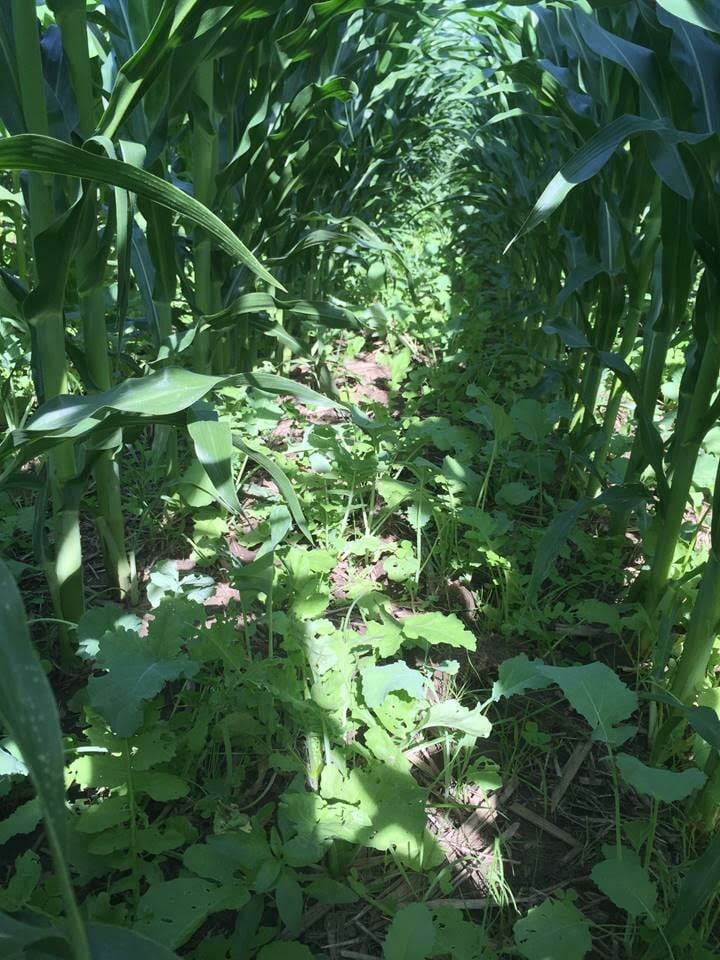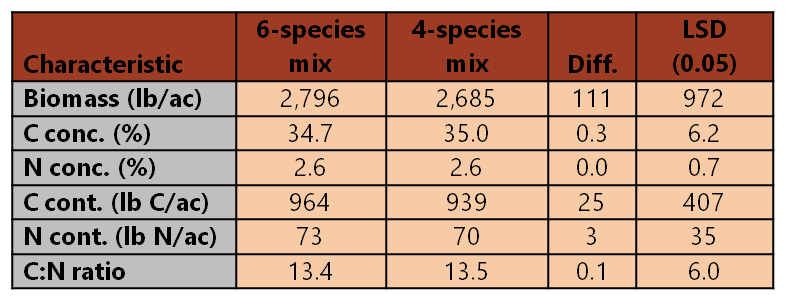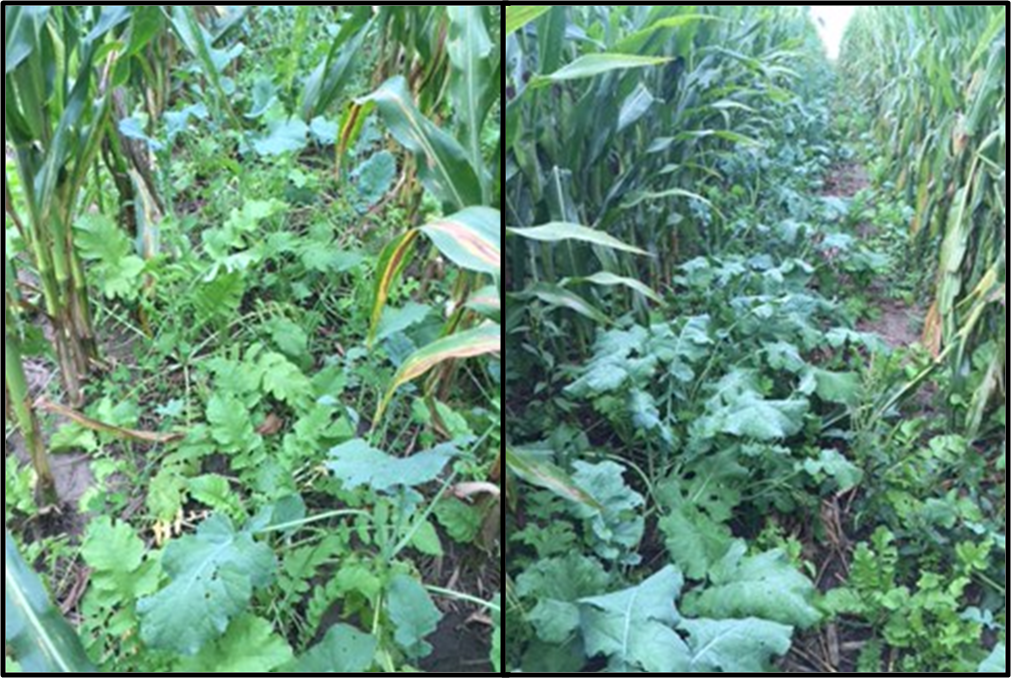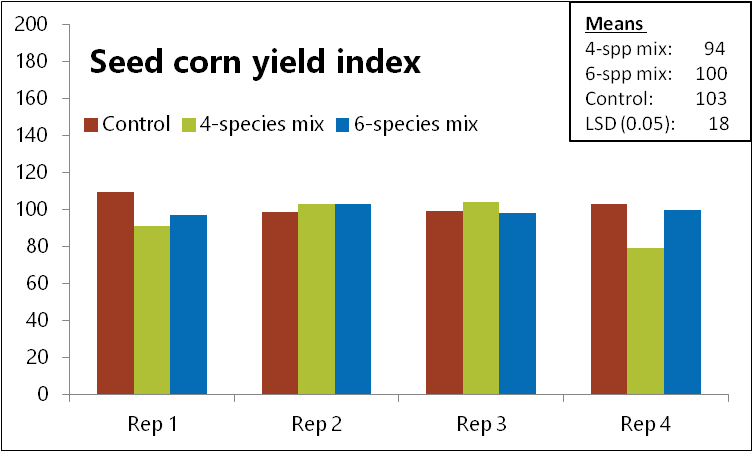RESEARCH REPORT: Interseeding Cover Crops into Seed Corn at V4
If cover crops can successfully be established when interseeded into corn in June, this may permit farmers to use existing equipment (rather than high-clearance machines or airplanes); may permit the use of more diverse cover crop species; and ultimately may increase the amount of cover crop biomass produced. Last year, PFI farmer-cooperator Jack Boyer interseeded a 4-species and 6-species cover crop mix into seed corn at the V4-V6 stage in randomized and replicated strips. He intended to see if the cover crop could persist underneath the seed corn canopy and see how much biomass could be produced in the fall following harvest.
You can read the full report here: Interseeding Cover Crops in Seed Corn at the V4-V6 Stage.

Multi-species cover crop mix seeded into seed corn on June 8, 2016 at Jack Boyer’s. Photo taken on July 8, 2016.
Here’s how Jack Boyer conducted the trial on his farm near Reinbeck in Tama County:
- May 13: Seed corn planted.
- June 8: Cover crop mixes interseeded into standing seed corn. Both mixes seeded at 20 lb/ac with a broadcast spreader.
- 6-spp mix: annual ryegrass (40%); berseem clover (15%); crimson clover (15%); lentils (15%); radish (10%); turnips (5%)
- 4-spp mix: annual ryegrass (60%); crimson clover (20%); radish (15%); rapeseed (5%)
- July 18: Female rows of seed corn detasseled.
- Aug. 8: Male rows of seed corn destroyed.
- Oct. 1: Seed corn harvested.
Key Findings
- Both the 4-species and 6-species mixes survived below the seed corn canopy and produced similar amounts of aboveground biomass by mid-October. While Jack did plan to sample again in Spring 2017, none of the cover crops survived the winter.

For each characteristic, if the difference is greater than the least significant difference (LSD), the treatments are considered significantly different at P ≤ 0.05. Cover crops were sampled on Oct. 12, 2016.

Cover crop mixes growing below seed corn canopy on Aug. 29, 2016. 4-species mix on left; 6-species mix on right.
- The interseeded cover crop mixes had no adverse effect on seed corn yield. The seed company Jack works with reported yield index values for each strip (Yield index = [Actual yield ÷ Field average] x 100). Jack says, “It was interesting to have confirmed by the seed production company that there was no yield drag due to the interseeding of covers into the corn at the V4-V6 stage [early June].”

Seed corn yield index for each treatment from each Rep at Jack Boyer’s. Seed corn was harvested on Oct. 1, 2016. Mean yield indices and the least significant difference (LSD) at the P ≤ 0.05 level are indicated in the inset table. Because the difference between any two treatments is less than the LSD, the treatments are not considered significantly different.
For more details on this trial, read the full report: Interseeding Cover Crops in Seed Corn at the V4-V6 Stage. Support for this trial was provided by the Iowa Department of Agriculture and Land Stewardship, Division of Soil Conservation.
For more information about this study and other studies as part of PFI’s Cooperators’ Program, contact Stefan Gailans at stefan@practicalfarmers.org.
